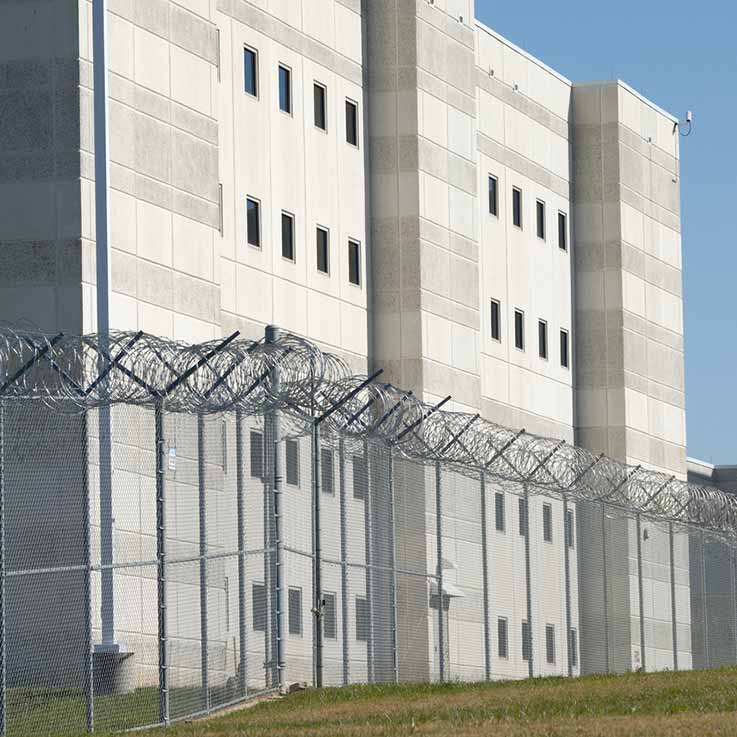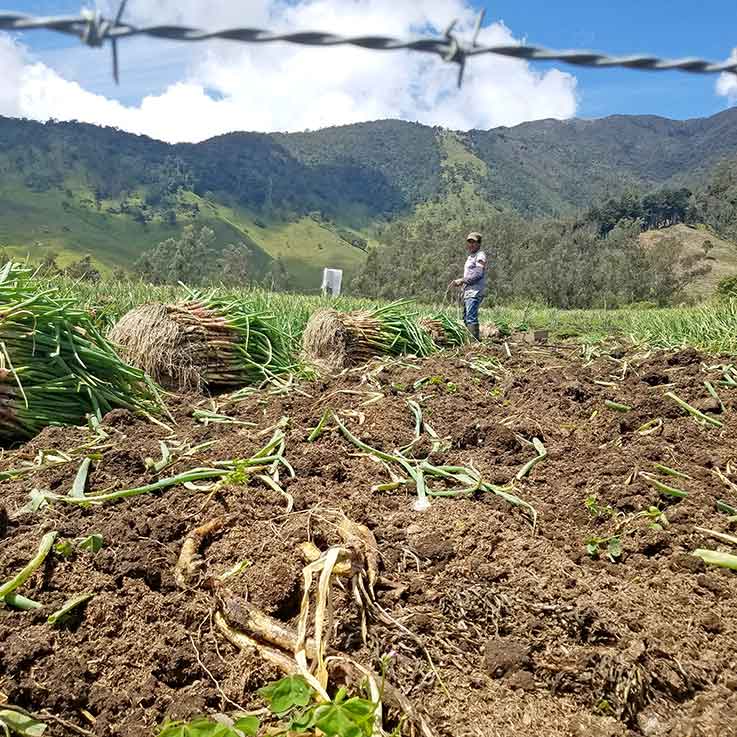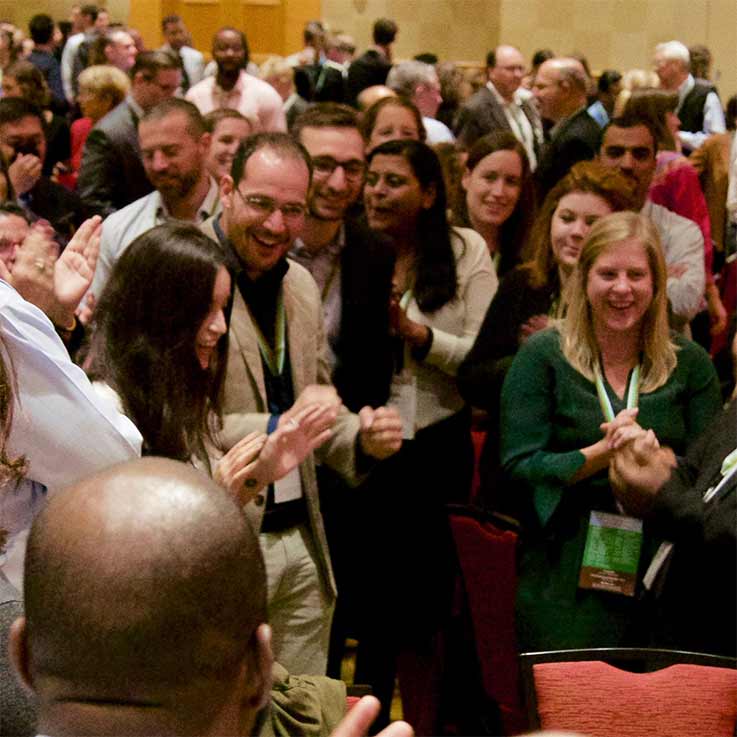
Medtronic Foundation’s Learning Community Focuses on Health Equity During Pandemic
Equity Starts With Learning
The Medtronic Foundation’s Learning Community brings together nonprofits across three continents to build collective knowledge and advance patient-centered health improvements in underserved communities.
- CITE
- SHARE
- COMMENT
- DOWNLOADhttps://ssir.org/pdf/Winter2021-Supp-Daly-Equity-Learning.pdf
- ORDER REPRINTS
By Jessica Daly & The Medtronic Foundation Learning Community Winter 2021
The health, economic, and social justice crises of 2020 are reshaping the future of both community and social services. The coronavirus pandemic has touched every corner of the world. For the global health community, it has redefined how care is delivered to high-risk communities, how we define risk, and how we address the power structures and root causes that create risk, vulnerability, and inequity.
From Philanthropy to the Front Lines
Corporate philanthropies must double their commitments to address social and health inequities in the face of COVID-19 and other crises. This collection of articles discusses how to reach and partner with underserved communities to provide the care they need. Sponsored by the Medtronic Foundation.
A New Era for Corporate Philanthropy | 1
Managing Through Crisis
Bringing Health Care Into Communities
Tapping the Power of Virtual Volunteers | 1
Equity Starts With Learning
Building Resiliency in Times of Crisis
Since the pandemic reached the United States, people of color have experienced disproportionately higher rates of hospitalizations and deaths. According to data from the US Centers for Disease Control and Prevention, Black Americans have a 2.6 times higher rate of cases, 4.7 times higher rate of hospitalization, and 2.1 times higher rate of deaths from COVID-19 than white Americans. Hispanic Americans have a 2.8 times greater rate of infections, 4.6 times greater rate of hospitalizations, and 1.1 times greater rate of deaths than white Americans.
The Medtronic Foundation aims to improve the health of underserved populations. But real change happens not because of funders. Real, sustained change is the result of the nonprofit organizations that transform financing to bridge communities and clinical care delivery in ways that address patients as people.
To take advantage of that collective knowledge and deep expertise, the Medtronic Foundation joined with its partners who are addressing health disparities from around the world to create a Learning Community, in which members share insights and best practices, exchange resources, and discuss lessons learned. Collective learning happens through regular insights from those on the ground and by actively working to break down the funder-recipient paradigm, putting a premium on partnerships.
In conversation with members of our Learning Community, here is a glimpse at what the Medtronic Foundation discovered about how nonprofits are adjusting to the crises of 2020, through the lens of health equity:
COVID-19 and social distancing measures have transformed how care is delivered and how nonprofits operate. When you reflect on 2020, what are some of the pivotal changes you implemented in real time to be responsive to the reality of what your communities faced?
Ann Marjorie Mbule | mothers2mothers
Our program is focused on preventing mother-to-child transmission of HIV, by providing education and support for pregnant women and new mothers living with the virus. During the COVID-19 pandemic, we’ve found that timely, accurate health-care information has been more difficult to access in communities we serve across sub-Saharan Africa, leaving many uncertain about COVID-19’s symptoms, how it spreads, and how best to protect themselves. This is a stark reminder of the early days of the HIV pandemic that devastated many African communities. We have also seen disruptions to HIV, maternal health, and broader health services—which could have significant consequences.
Against this backdrop, mothers2mothers (m2m) developed our Virtual Mentor Mother Platform (VMMP), an interactive tool run on the messaging platform WhatsApp that enables users to access vital health information and service referrals on COVID-19 and other health topics from a trusted source. While we had planned to develop a similar tool in the coming years, the coronavirus spurred us to act faster. VMMP contains COVID-19 education and prevention messages, in addition to information on HIV prevention and treatment, maternal health, early childhood development, and noncommunicable diseases—all translated into 30 languages.
Greg Mann | Grameen PrimaCare
Our program, Grameen Promotoras, champions health justice by providing essential health, social, and emotional support to low-income women entrepreneurs that Grameen America supports, most of whom are Latinx. Our members also have been disproportionately impacted by COVID-19, especially in the Bronx, New York, served by Grameen Promotoras’ community health workers. We pivoted to digital care with relative ease. Each day, these workers, or promotoras, proactively call their program members to check on their health and well-being, sharing resources and referral information. The promotoras are also readily available by phone or text to provide timely advice to their members when they are in need. Most notably, through their virtual outreach, the promotoras were able to ascertain the need for glucometers for members living with diabetes and subsequently provided these devices to those in need.
Karissa Moreno | Center for Well-Being
Our organization is a nonprofit health center in Sonoma County, California. We serve a predominantly low-income and Latinx population, many of whom struggled to access basic resources such as food, housing, and childcare. Sonoma County has been hard hit by recent floods, fires, and now a global pandemic. Once the shelter-in-place order was announced, we quickly pivoted from meeting with patients in person to telehealth services. Within 24 hours we were providing virtual medical nutrition therapy visits for residents struggling with the effects of diabetes, hypertension, obesity, and other chronic diseases. This has been critical support for a population that suffers disproportionately from health disparities and lack of access to resources, and who are at greater risk of developing complications if they are infected with COVID-19.
Anne Stake | Medtronic Labs
In 2019, Medtronic Labs, a public benefit corporation, launched Prerna in Bangalore, India—a comprehensive health-care delivery model for people living with, or at risk for, Type II diabetes, hypertension, and other comorbid diseases. The model integrates social and clinical interventions in a group-based setting, close to home. Our evidence and experience to date has shown that application of the group model in patients who are already connected with each other has increased effectiveness. With the emergence of the coronavirus, we quickly shifted our model to remote services, with contactless medication delivery and noncommunicable disease testing, telehealth, and e-gathering. Via health-coach moderated virtual support groups, patients share stories with each other, while receiving continued guidance on the management of their condition.
In our Learning Community, we’ve often discussed the role of community health workers (CHWs) in underserved patients, especially those with chronic conditions who are at highest risk for COVID-19, to have routine and customized access to care. How do CHWs ensure health disparities aren’t widening as we pivot the way health services are delivered?
Charlie Mandile | HealthFinders
HealthFinders serves a large population of immigrant and refugee patients with chronic diseases, including diabetes and cardiovascular disease, in rural Rice County, Minnesota. In our county, nearly two-thirds of people who have contracted COVID-19 identify as Hispanic or Black. The coronavirus hit our community particularly hard because of their preexisting chronic conditions, and, for a time, we saw the fastest-growing outbreak in the United States. We deployed our unique community-driven model to proactively reach out to vulnerable patients. Our CHWs have been pivotal in this response. In addition to virtual visits, they used our care coordination technology to create watchlists that would allow them to proactively monitor both vulnerable patients with COVID-19 and people with suspected cases. Their work has included proactive calls and check-ins to ensure their patients know exactly how to seek help if they have COVID-19 symptoms.
Our ongoing trusting relationships, strong communications, and relationship building have been critical to our success during the pandemic. In addition to information, reassurance, and guidance, our clinical teams and CHWs connect our patients to local resources such as housing assistance. We’ve also developed a produce delivery program to fill a critical gap in access to nutritious food. HealthFinders also prepares patients for calls they will receive from state or county contract-tracing authorities, encouraging them to answer the phone and reassuring them that these calls are simply to seek information about how the virus is spreading, not to punish people. By offering these resources and support, patients are better able to focus on their health.
Carmen M. Vélez Vega, PhD, MSW | Puerto Rico Public Health Trust
In recent years, the communities we serve in Puerto Rico have faced several emergencies, including a major hurricane and earthquakes. Through these experiences, we’ve learned many important lessons that we’ve applied to the coronavirus pandemic, especially around the definitive relevance of social determinants of health. These factors particularly impact people in communities with limited economic resources and lack of access to health services, education, and transportation.
Many of our clients also experience racism, sexism, homophobia, and other forms of discrimination. For these people, the effects of emergencies like the pandemic are significantly more severe—exacerbating obstacles that were there before the emergency—and the support of Community Health Promotoras is lifesaving. Promotoras bring the promise of someone who understands the language, the culture, and the significance of health. They are community members and help create linkages with resources to eliminate the obstacles to health that a client’s social conditions may impose. In order to keep providing services during emergencies, we must ensure connectivity between promotoras and their patients, as well as with the wider social and health system.
Muhammad Musa, MBBS, MPH | BRAC
BRAC provides health services to people living in poverty in 11 countries across Asia and Africa. Largely, these patients are living with chronic diseases like heart disease and diabetes, which means they are also at higher risk of complications if they contract COVID-19. We’ve found community-based outreach is essential to sharing information about COVID-19 and dispelling dangerous myths. Relying on our network of 50,000 community health workers (CHWs) and an additional 50,000 frontline staff and volunteers, we have shared knowledge on a massive scale—in areas where telecommunications are not available—through door-to-door outreach that promotes proper protection protocols, leafleting, and the use of megaphones on motorbikes. This effort has already reached more than 100 million people. We’ve also distributed hygiene products to more than 1.7 million people and personal protective equipment to 1.1 million people.
A lesson we learned from the Ebola crisis in West Africa is the importance of maintaining essential primary health services during an epidemic, which are again threatened amid COVID-19. We have exported that lesson, and our global network of 50,000 CHWs continues to reach last-mile communities with critical care for pressing health concerns like pneumonia, malaria, cholera, and tuberculosis. BRAC also continues to run health facilities, including maternity units providing vital health care to pregnant and lactating women. We have also modified our diagnostic and treatment protocols to include “no-touch” and “low-touch” approaches and rigorous preventative measures against COVID-19.
Swaroop Narayana, MD | Karnataka Health Promotion Trust
The CHW program we lead in collaboration with the government of Karnataka in India has had to reconfigure its programming approach to tackle the unique challenges posed by the pandemic. During the local lockdown, we repositioned CHW-client interactions to online platforms such as WhatsApp and telephone calls to ensure uninterrupted engagement with clients. When the lockdown ended, our CHWs reestablished physical contact, using adequate precautions and personal protective equipment. We also helped CHWs educate patients on COVID-19 alongside their efforts to educate on chronic diseases. This education covered aspects like additional precautions and measures to take, mental well-being, and linkages to humanitarian aid, such as grocery kits and free medicines.
With so many resources and so much attention turned to COVID-19, what elements of health care do you believe may need greater attention during this time?
Ann Marjorie Mbule | mothers2mothers
As our global community addresses the pandemic, my organization is working to encourage policy makers and funders to consider how technology can be integrated into health-care service delivery. We need to place greater focus on enabling people to use technologies to improve their health, for instance by prioritizing affordable internet access and digital literacy initiatives. We also need to encourage a tolerance of failure as some of these tools are rolled out and inevitably hit bumps in the road.
Swaroop Narayana, MD | Karnataka Health Promotion Trust
The coronavirus pandemic has led to disruptions of patient follow-ups and referrals. While care of COVID-19 patients is prioritized, other patients, especially those with chronic conditions, are deprived of care they need. Evidence has proven that these patients are at increased risk of developing complications due to COVID-19 and are prone to other infections.
One of our patients, a 45-year-old mother, has been treated for diabetes and hypertension for more than a decade. Recently, she was diagnosed with kidney disease requiring dialysis. She avoided treatment because of her fear of contracting COVID-19 and the high cost of medical services, which caused her health to deteriorate to the point of needing emergency surgery. Stories like these are becoming increasingly common as patients delay necessary care to avoid contracting COVID-19. CHWs can play a key role in helping patients confidently and safely seek the care they need to avoid more serious and costly health complications.
Greg Mann | Grameen PrimaCare
For Grameen Promotoras, providing emotional support and building trust have been essential elements of our program, especially during the pandemic. For example, one of our members is a low-income business owner and mother in New York City who has had an immeasurably difficult time balancing work and childcare during the pandemic. When her husband died of COVID-19, she became the sole provider for three young children. Without a support system here in the United States, she received emotional support from a promotora, who reached out regularly by phone and was able to connect her to counseling and other resources.
Karissa Moreno | Center for Well-Being
Some of our patients have also been overwhelmed by the pandemic. For example, one of our CHWs reached out to a patient who said he was suicidal. When talking with the CHW, he described in detail how he planned to take his life. She was able to stabilize him with trauma-informed coping strategies and breathing exercises, and she performed a three-way call to safely connect him to the suicide prevention hotline. Our CHWs are trained to use empathetic questioning, motivational interviewing, and other engagement strategies to create a space of support and safety.
Muhammad Musa, MBBS, MPH | BRAC
Simultaneous with the COVID-19 pandemic, other crises that demand urgent attention are still occurring. For example, Bangladesh shelters nearly 900,000 Rohingya refugees, and a combination of monsoons and a super-cyclone have recently left more than one-third of the nation flooded or ravaged. Those who lost their homes to extreme weather have been forced to seek refuge in crowded shelters, exacerbating the spread of COVID-19. To address these compounded crises, BRAC has been providing emergency cash support to people experiencing food insecurity, conditional cash support to repair houses, and crucial assistance including dry food, temporary shelter, and health services. BRAC is also the largest nongovernmental responder to the refugee crisis in Cox’s Bazar, Bangladesh, with a multisectoral response that spans shelter, food security, health care, water, sanitation, hygiene, protection, and more amid COVID-19.
Bringing Sustainable, Patient-Centered Care to More Communities
Many foundations and corporate philanthropies once took for granted that reaching the underserved meant we were addressing health disparities. With our sights set on measuring specific health outcomes in aggregate, we didn’t always devote the necessary attention to understanding disparities, addressing their root causes, and empowering communities to sustain patient-centered health improvements over time. Too often, we overlooked the deep legacies of inequality that are woven in the fabric of many communities around the world.
These voices from our partners demonstrate that this must change.
Our collective goal with the Learning Community is to provide an open forum for us to learn together, by elevating the voices of our nonprofit partner organizations who serve these populations and creating new and lasting solutions to the challenges our partners face on a day-to-day basis. While addressing the needs of our communities, we must carefully consider these firsthand experiences and also challenge each other on the types of voices and resources offered to those we serve.










